Vic Berry’s Scrap Yard - part 1
In the early 1980s Vic Berry became famous in railway circles when increasing numbers of rail vehicles and locomotives began arriving for cutting up at his scrapyard opened in the ex-GCR goods yard adjacent to to that of his brother Frank Berry.
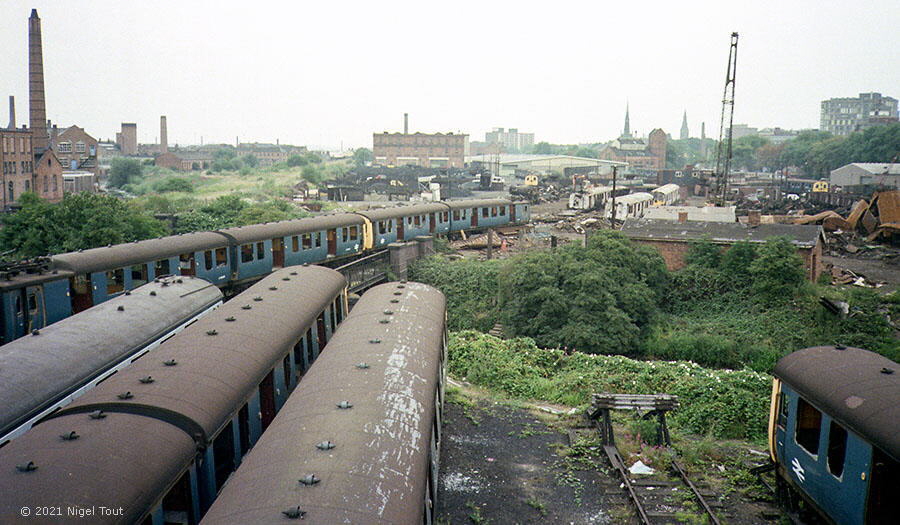


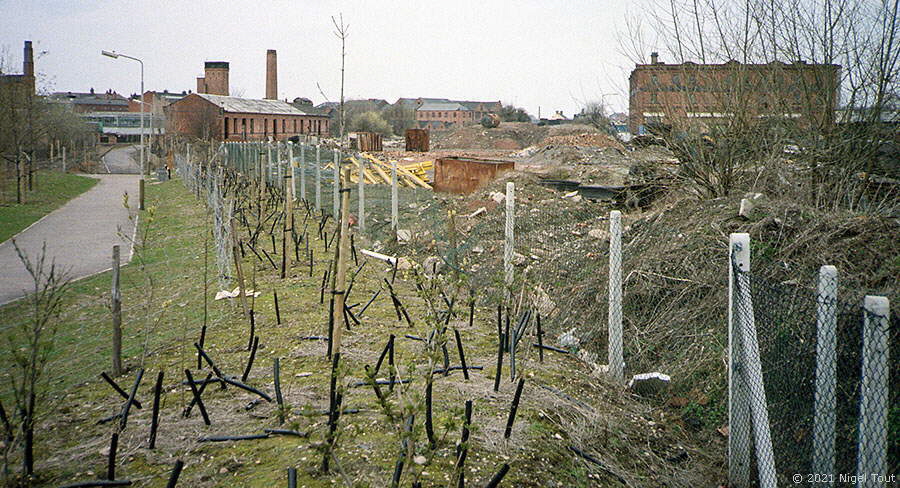
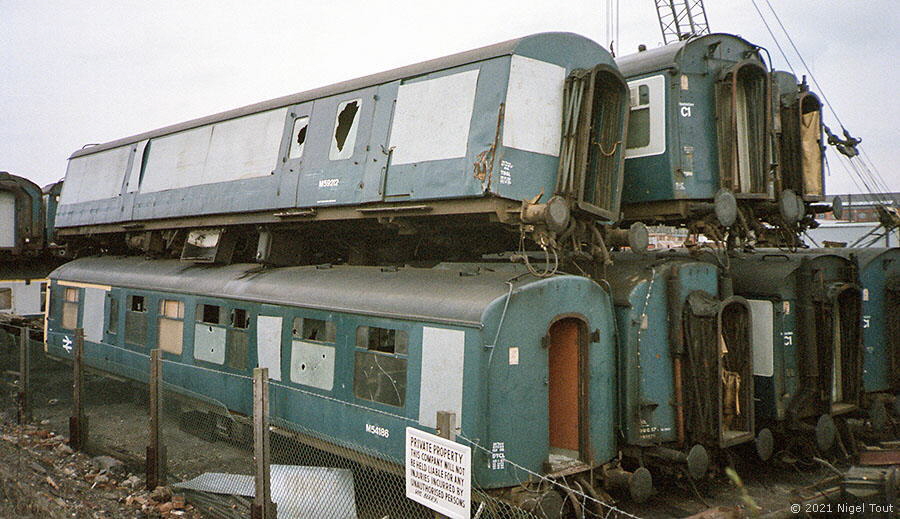
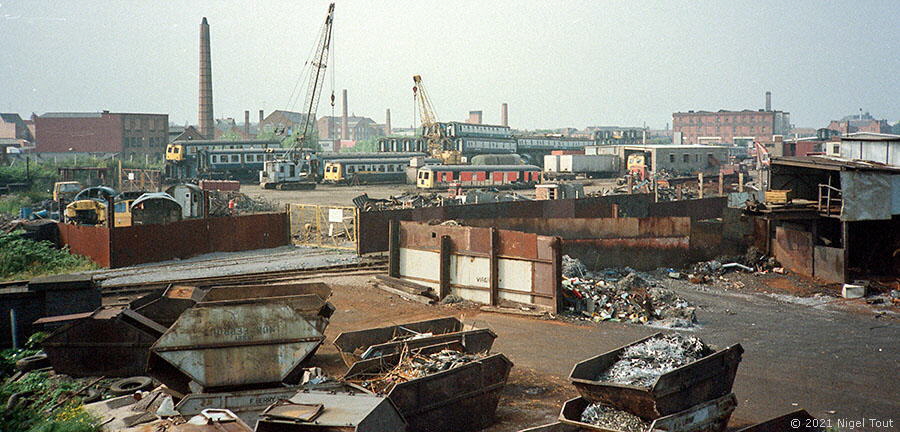
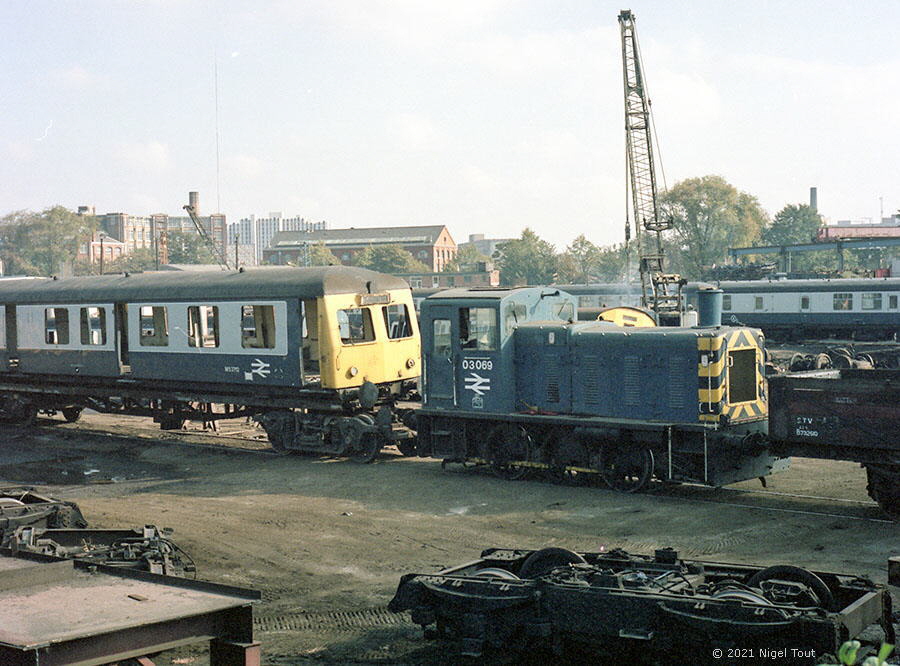
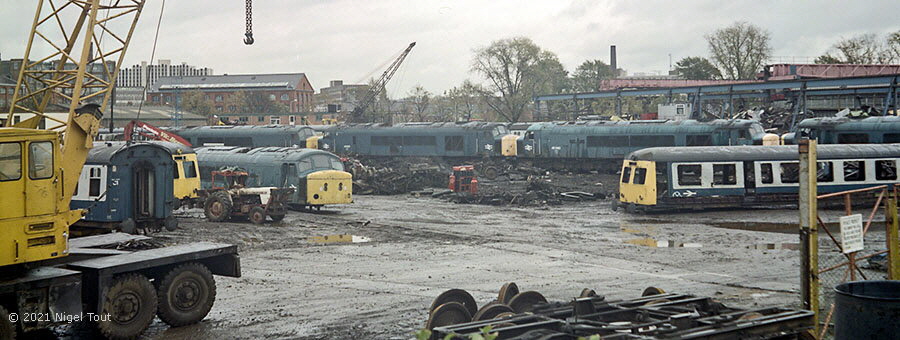
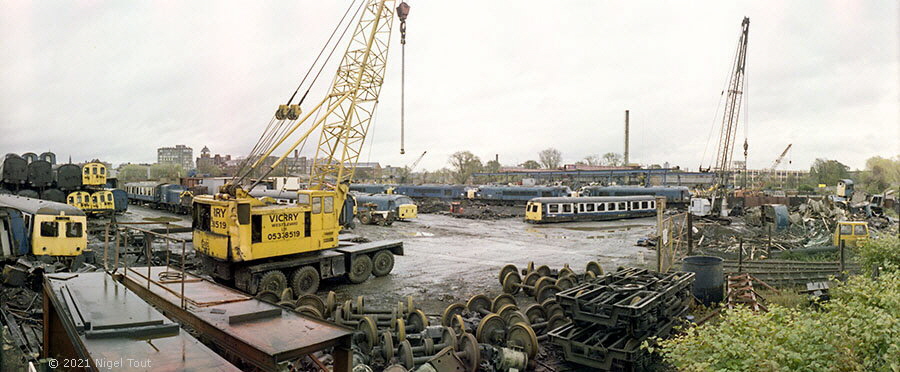
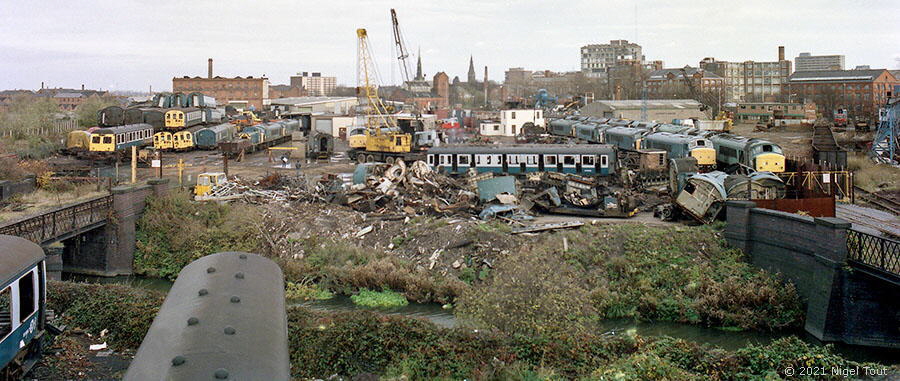
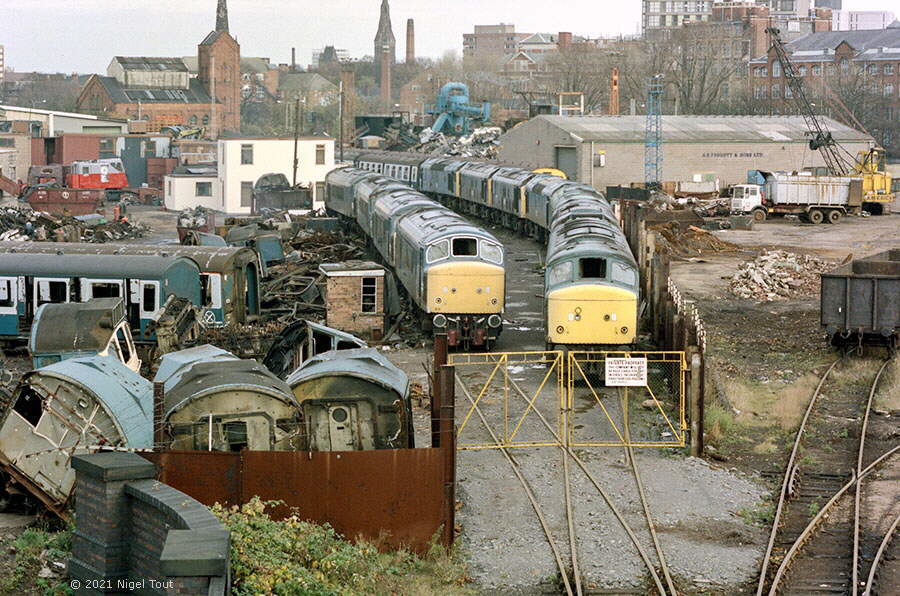
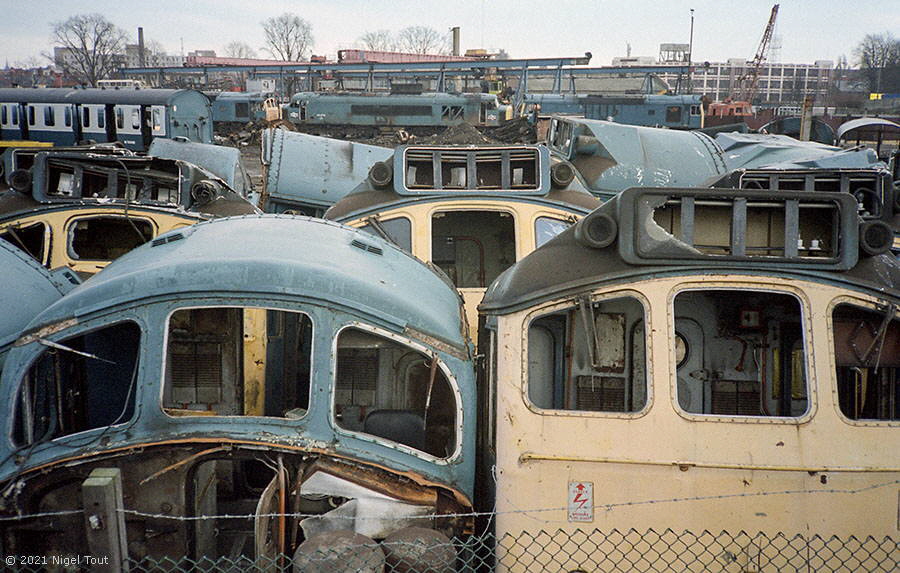
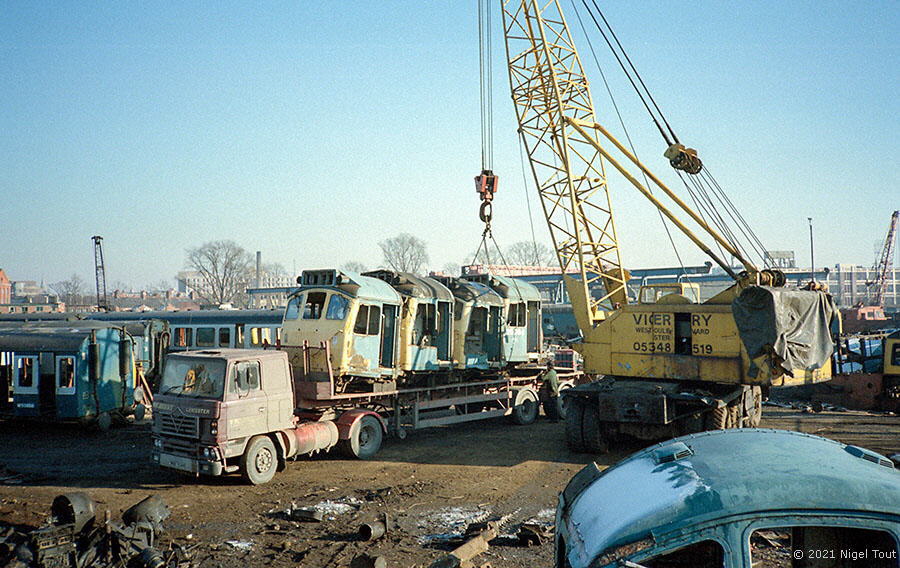
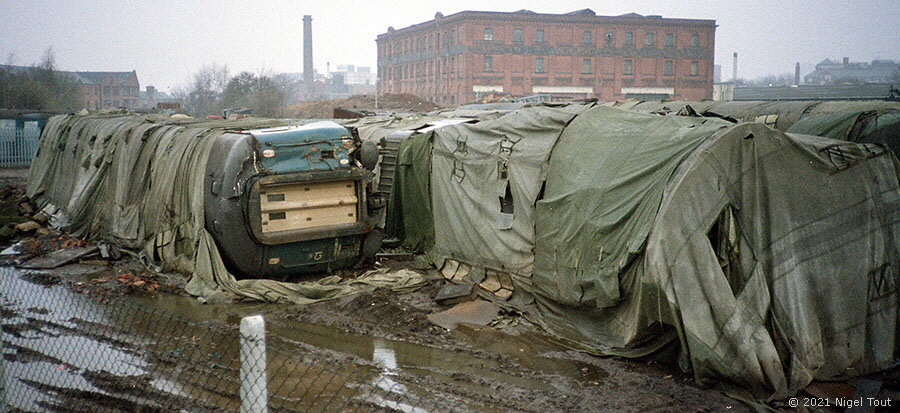
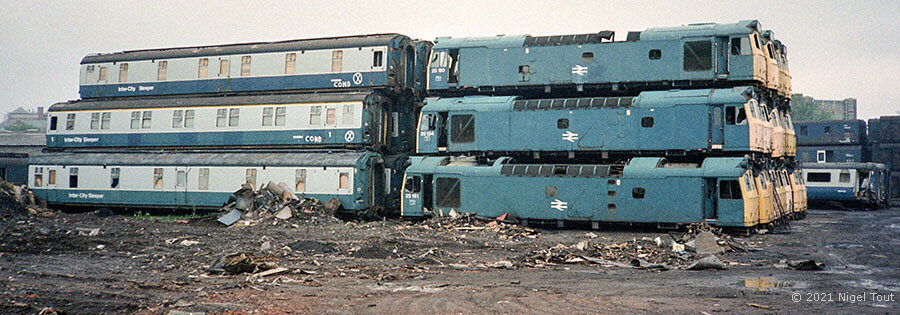
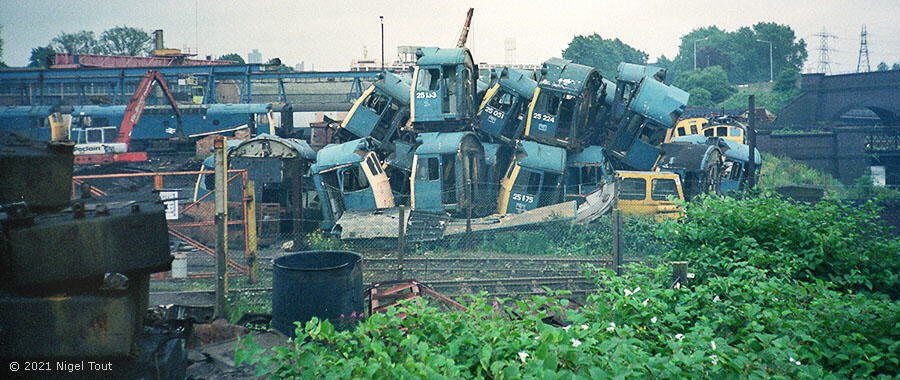
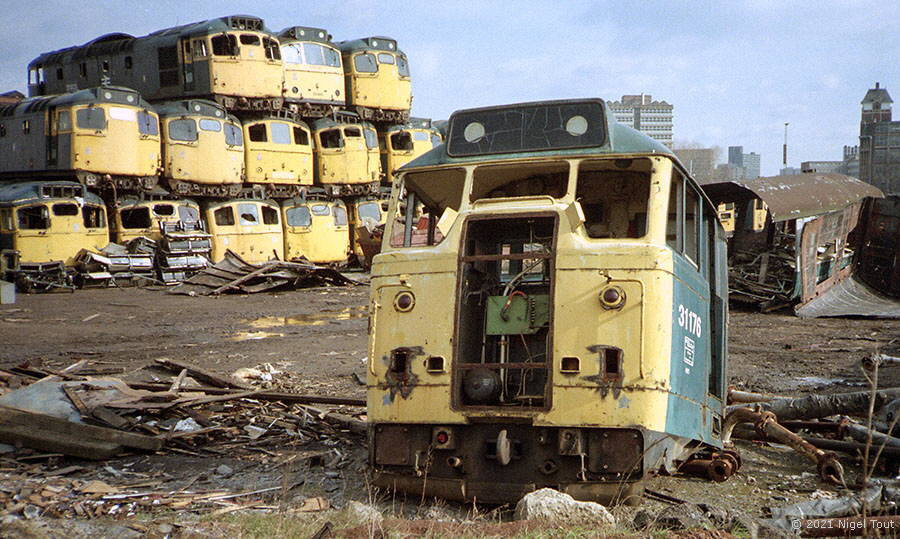
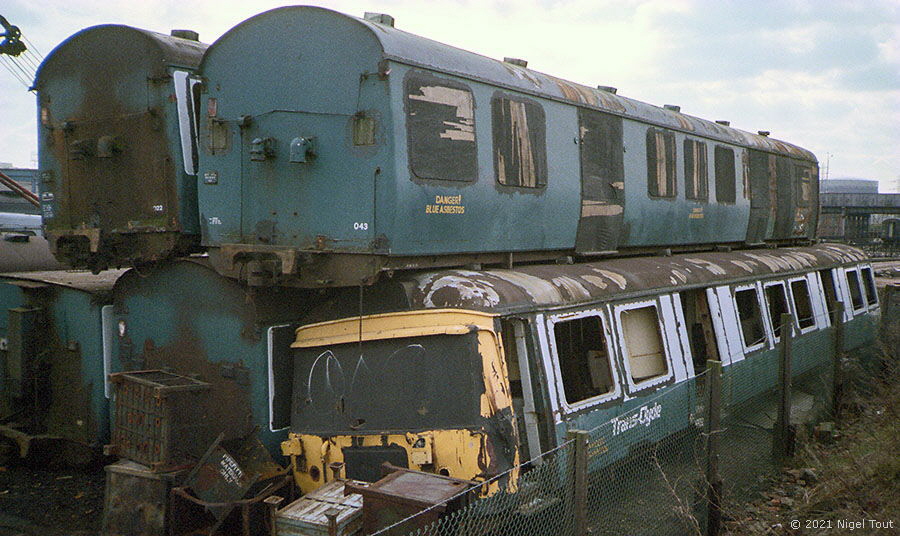
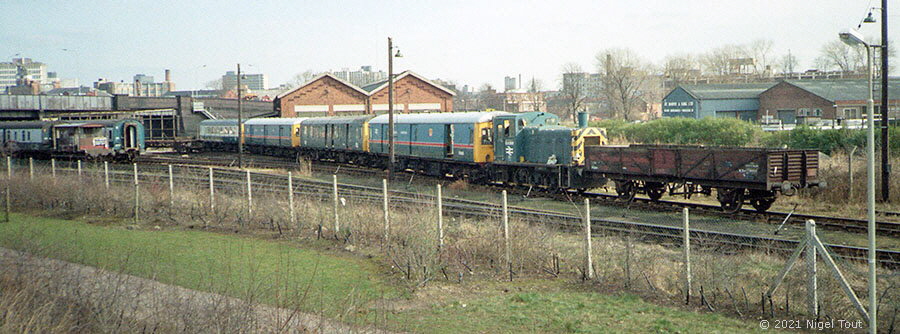
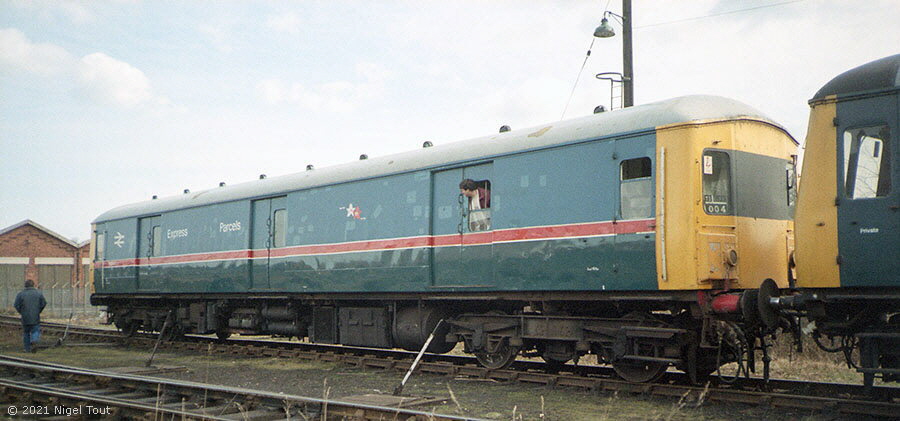
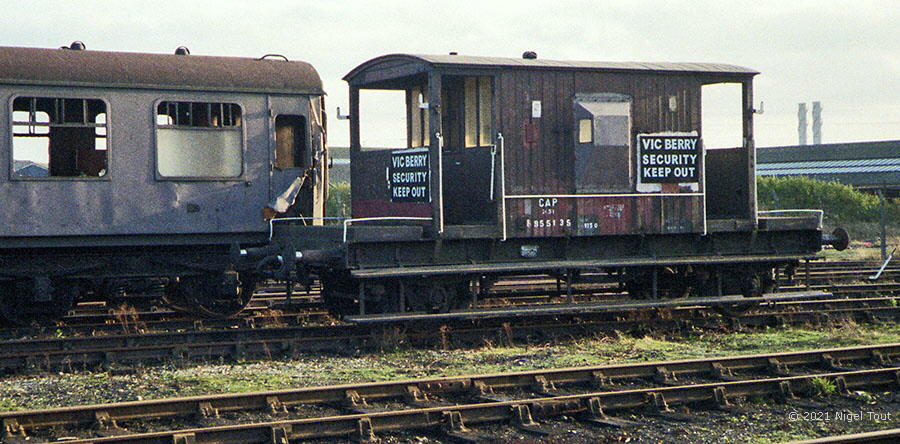
In 1982 the view from Upperton Road bridge showed vehicles from Class 306 electric multiple units having been delivered for cutting at Vic Berry’s scrapyard. Note that the coal yard has been squeezed to the left of the site though was no longer rail connected.
The easy ways to view Vic Berry’s scrapyard casually in 1982 were from Upperton Road bridge, as in the previous photograph, and from Western Boulevard as here. This is another Class 306 electric multiple unit, built for the Eastern Region’s suburban workings out of Liverpool Street station, London.
The first locomotives that were cut up in Vic Berry’s scrapyard were two Class 76 1500v electric locomotives from the Manchester-Sheffield line which arrived in 1983[1]. Here in 1984 Class 83 25Kv electric locomotive 83005 was found in Vic Berry’s scrapyard for scrapping with two fellows.
In the mid-1980s the Great Central Way footpath was laid on the trackbed of the ex-GCR main line, so providing easy access viewing from the west side of VIc Berry’s scrapyard. Seen here in April 1986. Later another footpath was created which cut through at the side of the scrapyard, across this photograph approximately between the buildings just in the distance. This footpath, as well as providing a convenient link between Western Road and Western Boulevard gave further views into Vic Berry’s scrapyard.
Adjacent to the Great Central Way in April 1986 was the beginnings of one of the stacks of coaches that became a feature of Vic Berry’s scrapyard.
In the background, beyond the fence, is Vic Berry’s scrapyard. In the foreground is Vic’s brother Frank Berry’s scrapyard still in the corner between Upperton Road and Western Boulevard, seen in April 1986. The skips for scrap are here labeled for Frank Berry who’s scrapyard apparently did not receive items by rail for scrapping but did send out the cut up scrap by rail .
For many years ‘Class 03’ 0-6-0 diesel-mechanical shunter No. 03069 was used to move rail vehicles for scrap into and around the yard, as seen here in October 1986. This locomotive was fortunate and was sold into preservation when the scrapyard closed, unlike the majority of vehicles that it moved around.
The sad sight of a group of Class 45 locomotives awaiting cutting up in October 1986. 45109 is left of centre and 45043 is to its right. These locomotives had been commonly used on the Midland Main Line though Leicester.
A general view of Vic Berry’s scrapyard from the Great Central Way in 1986. One of the two railway entrances for rolling stock can be seen on the right.
This was the general view from Upperton Road bridge in 1986 showing the two railway entrances to Vic Berry’s, on far left and far right, each over a bridge across the Old River Soar. Note also on the far right the line of empty wagons waiting in what had been brother Frank Berry’s scrapyard. However, the building beyond carries the sign ‘A.E. Piggott & Sons Ltd’.
Vic Berry’s scrapyard with Class 45 locomotives, fenced off from the scrapyard on the right with the building carrying the sign of A.E. Piggott & Sons Ltd. It looks like the latter scrapyard was still capable of sending out scrap in wagons though I never saw this while Vic Berry’s yard was active with all the railway vehicles which often blocked the chord line in and out to the main railway.
The sad sight of lines of cab fronts alongside the Great Central Way footpath.
Class 25 locomotive cabs being craned onto a lorry, 31st January 1987. The cab with the sling carries the number 25284 which is reported to have come from Swindon for asbestos removal[1]. This same cab, with the same marks in the dirt on it, was photographed in the lines of cabs next to the Great Central Way a couple of months before so these cabs are in the process of being loaded and were either being moved round the site or were on the way out of the scrapyard.
This raises an interesting question—How did the scrap leave Vic Berry’s scrapyard? There was no sign of wagons carrying the scrap out, so the scrap must have gone out by lorry but I cannot remember them and they do not appear in photographs.
For later photographs see the next page, Vic Berry Scrapyard - 2.
Reference:
These coaches had been involved in an accident on British Rail and had been set down on the edge of the scrapyard while investigations into the accident were being carried out. The canvas coverings had been very neat initially but were now becoming very weather-worn when photographed in April 1987.
The first of the stacks of locomotive bodies for which Vic Berry’s scrapyard became famous, next to a stack of coach bodies, in July 1987. Rail vehicles were arriving at a greater rate than they were being cut up so they were stockpiled.
A stack of Class 25 cabs near the entrance to the scrapyard. A philosophical question ponders whether it is legitimate to underline these numbers in one’s Ian Allen locospotters books to indicate that the locomotives have been spotted. On the left is a stack of locomotive fuel tanks.
A lone Class 31 cab with its front doors removed in front of a stack of Class 25/26/27 (I always struggled to identify them from the front) bodies.
A stack of coaches around a Trans Clyde electric multiple unit coach, in March 1988. Significantly in the light of subsequent developments, the coaches are prominently marked “DANGER! BLUE ASBESTOS”.
Here the yard shunter, 03069 with its match wagon, is shunting stock in the exchange sidings, in March 1988. On the left in the background is Upperton Road bridge while in the foreground is the Great Central Way footpath.
A Class 128 parcels unit March 1988 being shunted in the exchange sidings, in March 1988. Although this looks in good external condition Wikipedia reports that the last of the class was withdrawn in 1990 so the scrapyard was probably its last destination.
For a time this guards van could be found by the rail entrance to Vic Berry’s scrapyard and provided a warning to any potential intruders.
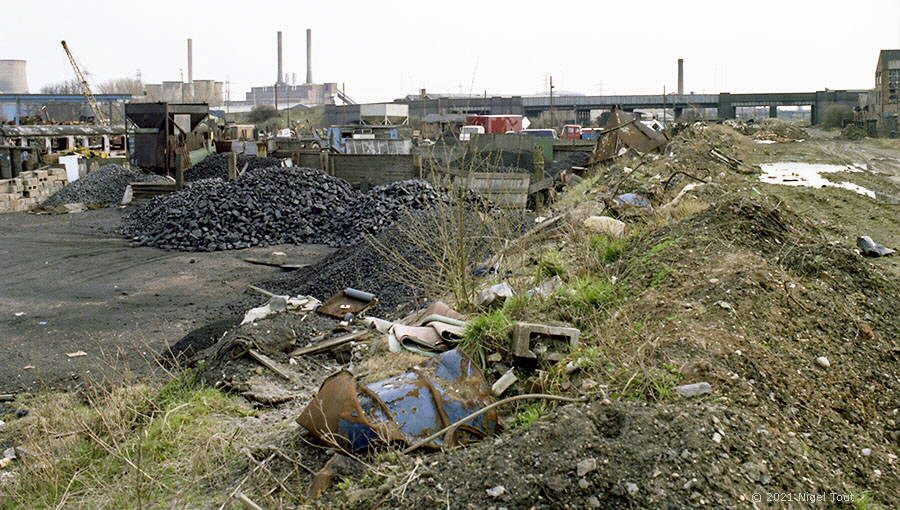
In April 1979 I walked along the trackbed of part of the Great Central Railway in Leicester to photograph what remained exactly ten years after the last passenger train had run here. This photograph was taken looking south towards Upperton Road bridge with the main line trackbed on the right and the ex-GCR goods yard on the left. Of secondary interest at the time was the railway coach on the far left in the process of being scrapped in the scrapyard opened by Vic Berry.

A panorama photograph gives a strange perspective to Upperton Road bridge and shows wagons in the exchange sidings waiting to enter Vic Berry’s scrapyard.

From the south side of Upperton Road bridge more wagons and coaches can be seen standing in the exchange sidings. These vehicles were delivered down the chord from the Leicester to Burton line.
![]() The photographs in these railway photograph galleries are available for use under a Creative Commons Attribution-ShareAlike 4.0 International license. Attribution should include a link to www.nigeltout.com.
The photographs in these railway photograph galleries are available for use under a Creative Commons Attribution-ShareAlike 4.0 International license. Attribution should include a link to www.nigeltout.com.

Panoramic view looking north from Upperton Road viaduct. At far left is the Great Central Way path on the trackbed of the ex-GCR main line, with Vic Berry’s scrapyard in the centre and the A.E. Piggot/Frank Berry scrapyard on the right. In the left foreground are several coaches waiting their turn in Vic Berry’s scrapyard.
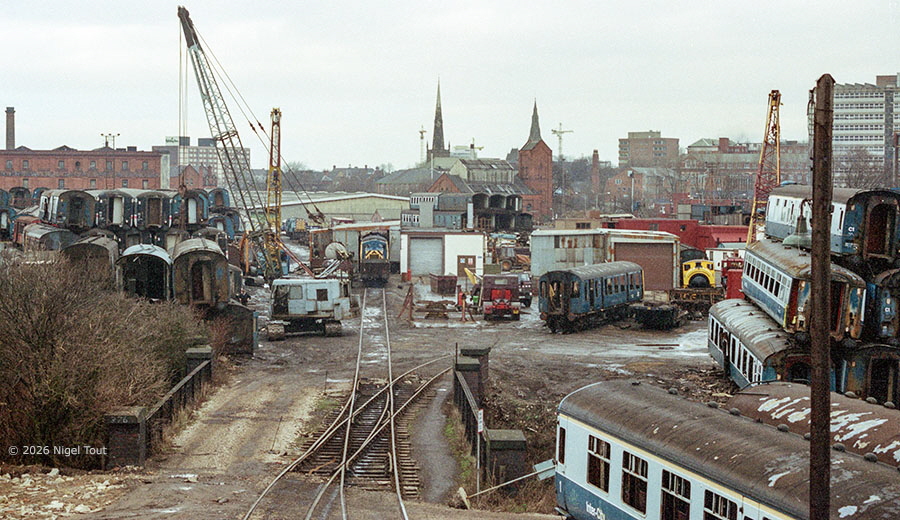
Vic Berry’s scrapyard showing the sheds. One was used for removing asbestos from the vehicles and one was used to burn off any remaining combustibles from the metal work.